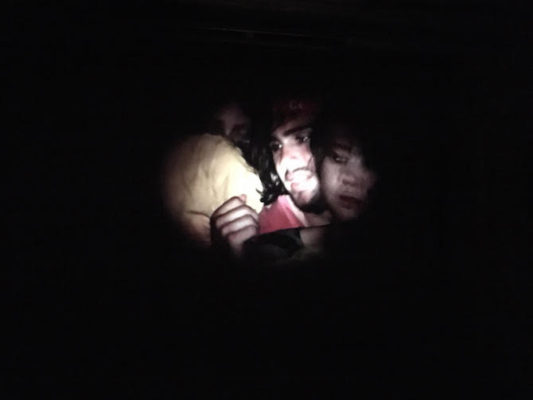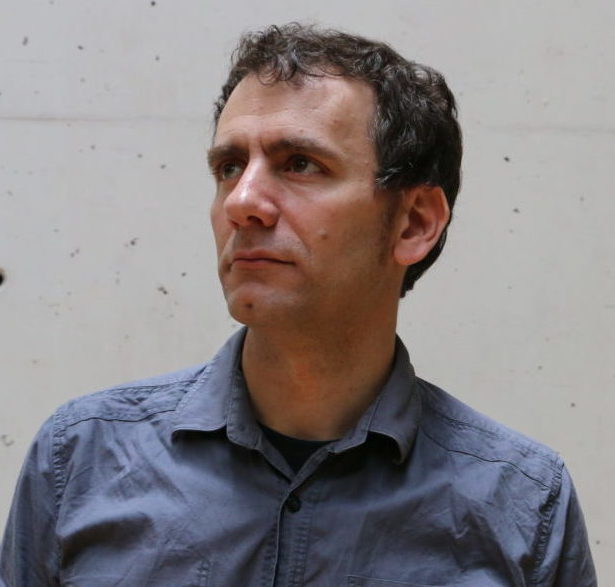Search
To search for an exact match, type the word or phrase you want in quotation marks.
A*DESK has been offering since 2002 contents about criticism and contemporary art. A*DESK has become consolidated thanks to all those who have believed in the project, all those who have followed us, debating, participating and collaborating. Many people have collaborated with A*DESK, and continue to do so. Their efforts, knowledge and belief in the project are what make it grow internationally. At A*DESK we have also generated work for over one hundred professionals in culture, from small collaborations with reviews and classes, to more prolonged and intense collaborations.
At A*DESK we believe in the need for free and universal access to culture and knowledge. We want to carry on being independent, remaining open to more ideas and opinions. If you believe in A*DESK, we need your backing to be able to continue. You can now participate in the project by supporting it. You can choose how much you want to contribute to the project.
You can decide how much you want to bring to the project.

Athens. The moment just before the earlier moment. documenta 14. What preceded this moment is extremely interesting, a gesture – and we shouldn’t lose sight of the fact that gestures can be empty – that led to documenta being inaugurated first in Athens and then in Kassel. Germany and Greece, two Europes, two pasts, two political situations, a general tension. And a series of questions that will hover over the whole event: What can art do, or what should it do? Do we need illustrations? For whom are illustrations meant? What capacity for real action do large-scale artistic events actually have?
A process based on discursive thought and produced through debate, a concatenation of contents that presuppose a continuation. Paul Preciado in action, a coming apart of everything starting from parallel elements, an alteration of the order and a transcending of the pre-established. Or perhaps the confidence and the desire that it be this way, for the fall will come later. ’Later’ appears as the moment of the display, with the opening of documenta 14 in Athens. And this is where everything comes apart, though not for the best. I can speak of failure, and not in the positive sense. After five years, improvisation: documenta will open later than foreseen, for everything is happening at the last minute. The moment that it was supposed to open at the Odeion building, one of the prominent exhibition spaces, there is basically chaos. And we expect a lot more from documenta than we do from any other exhibition. It’s once every five years, remember. It’s something that is supposed to mark the development of at least five more years. It’s something that has to change the way in which we understand art. And yes, it’s not easy.
And there’s no change, no reformulation; instead, the shoddiness is covered by a cool layer of presumed new education and presumed new politics. But even worse than the disappointment is the fact of finding something that smells of a classical and basic academic exercise: you have a result you have come across beforehand (in this case the result is ’hey, the world is in a really bad state’) and you set up a supposed investigation with several lines in order to get there. The more lines the better, the more pages the better, the more quotes the better, the more boredom the better, the more distance the better. And you fill it with images that illustrate the result and yet are not strong enough to take your discourse apart (the ’hey, the world is in a really bad state’ is at once the discourse and the result). Something that is already closed, implying that everything is alright as it has all been decided. The exhibition is dead. You’ve decided to kill the exhibition to make sure it doesn’t touch you. Furthermore, it turns out that it’s not a large exhibition but a series of small exhibitions that you have probably already seen before. And the hint that it’s all a preamble for Kassel.
The parts. At Odeion, the Conservatoire of Athens, a quite fine exhibition starting from a classical construction of sound and sound practices that lead to performativity. No gender dispute or instability are found here, although there are always works that deserve a mention, like those by Pauline Oliveros (in ’historical recovery’ mode); Theo Eshetu, with a film in which different aesthetic, documentary and narrative typologies regarding identity are called into question; or a 2007 video by Ben Russell presenting a blend of fury, dance and sweat combined with danger. At the Fine Arts School, a quite fine exhibition that could be signed by any orderly art fair. Once inside, I think I could just as well be at Frieze; that being in this place (with its livid yet silenced fine arts students) isn’t important; that the aesthetics of the exhibition is just the same as usual — it’s norm. Needless to say, there are good works too, of course, like the film by Rosalind Nashashibi, who verges on being an ’external’ artist; the historical brutality treated in the present by Artur Zmijewski, with new concentration camps and poverty ghettoes; or the aestheticisation of politics and migration by Bouchra Khalili. Two venues, the first staging an exhibition that would be right for any medium-sized art centre of average interest, and the second paralleling the limit between a select art-fair aesthetics and an expression of political will in a deteriorated context, outside the exhibition. But again, we expect more from documenta and here this conceptual bonus, this variation, this absolute reconsideration is missing. However many smidgens of Sami art you may add.
At EMST, the new national contemporary art museum in Athens, the disaster takes shape. The presumed historical grounds of discourse merely deny possibilities by corseting. The works are obviously illustrations and are not allowed to become real action in the present. Yet the discourse is only this basic result, and so the exhibition proposal eliminates all possibility of action for art. And it is classical, and historical, and the exhibition language is normative – extremely normative – and as conservative as can be. I don’t understand what has happened between these previous moments of destabilisation and this low-profile academic exercise. Low profile too in the archive option, that things can be done well, and yet this isn’t the case. The desire in those visiting the exhibition continues and Daniel García Andújar conquers Instagram as his work is more colourful and people realise they need empathy. They put Annie Sprinkle and Beth Stephens under an escalator, so any real and sensual option in their bed becomes an impossibility. The few elements that could prove interesting go unnoticed and what is intended to be emphasised is, once again, a supposedly decolonial scent that is très bien but untained. Unnecessary too.
Then come the places in the city in which you will not have the weight of the exhibition and its language (as if you’d been unable to avoid it earlier, of course). So it doesn’t work. For a start, a problem with categorisations: putting short performances and things that aren’t short performances in the same boat. So, if you’ve got a map with over forty external locations in progress it looks as if you’ve been working hard. Or perhaps not so hard, if a fair number of them consist of a nice little performance programme. Memorable are a flat with a crazy installation by Andreas Angelidakis that would work well at DIS’s Berlin biennale and a venue like the Polytechnion, a place as incredibly charged with meaning and power that the works that documenta presents here disappear completely.
In a taxi, looking for some sheep dyed with indigo (that we don’t find, just as I won’t be able to find anything on Roger Bernat, however much I may try, ask or confront staff’s absolute ignorance) we learn of a terrorist attack carried out at that precise moment in the heart of Stockholm. The four of us travelling inside the taxi live in Stockholm. A deadly silence and a deluge of SMS. And then it’s time to consider the political meaning of this documenta and how little it touches us personally, the insufficient change it has brought to artistic functioning and its lack of emotion — which is the least we expect. We could also ask how people move from something that could be a genuine reconsideration to a pompous commercial gesture. And yes, it’s not easy. Thinking of gestures and the dislocation of space was also part of Okwui Enwezor’s documenta; looking to new fields was also a trait of Catherine David’s documenta. Even marking other locations on maps could be a gesture as politically empty as the fact that a table in a restaurant on the Costa Brava was a physical part of documenta 12. Like Athens.

Director of Index Foundation, Stockholm, exhibition curator and art critic. Yes, after Judith Butler it is possible to be several things at once. He thinks that questions are important and that, sometimes, to ask means to point out.
"A desk is a dangerous place from which to watch the world" (John Le Carré)